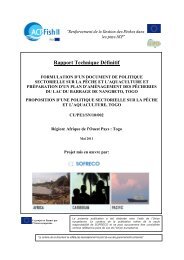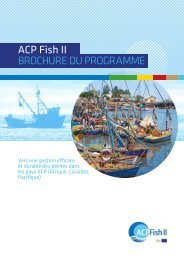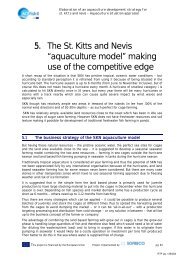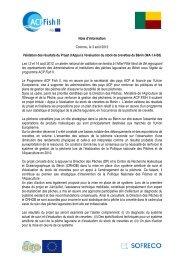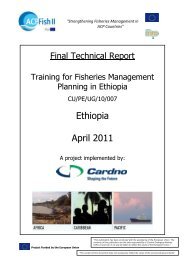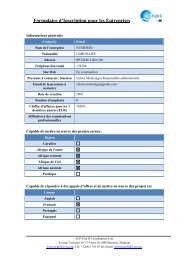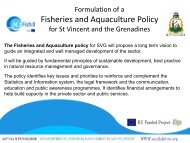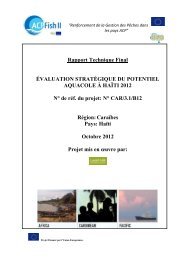Create successful ePaper yourself
Turn your PDF publications into a flip-book with our unique Google optimized e-Paper software.
Ministry of <strong>Fish</strong>eries and Marine Resourcespelagics, which with their higher energy content (per gram) may have allowed higherproductivity – faster growth, better survival and higher levels of recruitment.The effects of predation on the hake stocks is largely unknown. This is likely to below for adult hake, being top predators themselves, but juvenile hake are more susceptibleand are known to be preyed on by a range of fish and mammals, including sealsand adult hake (cannibalism).2.1.4 GrowthHake may grow to more than 100 cm in length, although the largest found since trawlsurveys started in 1990 was 92 cm, but hake of up to 112 cm are still being landed bylong-line boats. Both species may live up to 12 years, but few of that age are found intrawler samples. Cape hake and deep-water hake grow at different rates. Males matureearlier than females in both species and have a lower average maximum length and ahigher growth rate.According to the latest trawl survey results (2010), 50% of the Cape hake populationreaches maturity at about 21 cm, as compared to 35 cm for deep-water hake, at 1.7and 2.5 years respectively (but see next paragraph). There is a large amount of annualvariation in growth, possibly caused by feeding conditions or by environmental factors.Growth and maturity may also vary with species abundance.Current age validation research suggests that the age of Cape hake has previouslybeen overestimated and hence growth underestimated. This work still needs to bepeer-reviewed, but if accepted means that Cape hake at least are shorter-lived andfaster growing than reported above (Wilhelm pers. comm.).2.1.5 Influence of the physical environment on hakeA regime shift is believed to have occurred in the northern Benguela during the 1980sand 1990s, at least partially driven by fishing. Very low biomass levels of exploitedfish stocks associated with changes in the transfer of energy between predators andprey may have resulted in a less efficient energy transfer (Cury and Shannon 2004).This is believed to have reduced the productivity of top predators such as hake (Rouxpers. comm.)Being demersal fish the adult portion of the stocks are partially buffered from mostenvironmental anomalies, which generally have the highest impact on the inshore andnear-surface pelagic zone. It is generally accepted that the 1993-1994 low oxygenevent in the central area of the Namibian shelf had a negative effect on both demersaland pelagic fish stocks. While no clear link has been established between the occurrenceof Benguela Niños (warm and saline surface water intrusions) and the productivityof adult hake, pre-recruits were severely affected during the 1995 BenguelaNiño through poor growth and high natural mortality. The impacts of climate changeare currently unknown and various scenarios are possible. These range from a decreasein upwelling, and hence productivity, of the system, through to an increase inupwelling and productivity. An increase in the frequency and severity of adverse conditions,such as Benguela Niño events, is also considered likely. It is probably safe tospeculate that any changes will have severe effects on the Namibian fishing industry,although predicting which sectors will be most affected is difficult.Hake Management Plan Page 3





